Understanding Norovirus
What Is Norovirus?
Norovirus is a highly contagious and common virus that is responsible for causing gastroenteritis (inflammation of the intestines) in humans. The specific virus that causes illness in humans is the Norwalk virus, which is part of the Caliciviridae family of viruses. Norovirus is unrelated to influenza, but the symptoms it causes are also referred to as the “stomach flu” or the winter vomiting bug. It is responsible for a considerable number of inpatient and outpatient visits every year as the most common cause of foodborne illness in the United States.
Norovirus Symptoms
Norovirus infection causes inflammation of the intestinal tract, which can result in sudden onset of severe diarrhea and vomiting. Some people also experience pain or cramps in the abdominal region, low-grade fever, muscle aches and pains, general feelings of discomfort, and nausea. In some cases, extreme dehydration may result. In most people, symptoms last between one and three days, but traces of norovirus can remain in fecal deposits for up to several weeks or even months and remain contagious. Some carriers of the virus are asymptomatic (showing no common signs or symptoms of the pathogen) but are still contagious.1
Timeline and Duration of Infection and Illness
The incubation period is the time between first exposure to a pathogen and the appearance of symptoms. According to the Centers for Disease Control and Prevention (CDC), the incubation period after exposure to norovirus is 12 to 48 hours, with the average period being around 33 hours.2 The average duration of illness is one to three days, with peak illness typically occurring during the first day.
Who Is At Risk?
Anyone is at risk of a norovirus infection, but some groups are more susceptible to it. The elderly, young children under five, and those who are immunocompromised are at higher risk of experiencing more serious symptoms or complications from norovirus. Additionally, consumption of contaminated food or water puts people at a higher risk of getting norovirus, especially raw or undercooked shellfish such as oysters.3
The Burden of Norovirus
The CDC estimates that norovirus is responsible for 19 to 21 million cases of gastroenteritis annually in the U.S.4 Almost 2.3 million people seek outpatient treatment, and a further 465,000 seek treatment at hospital emergency rooms.4 In the U.S., norovirus is responsible for 58% of foodborne illnesses.4 Although norovirus infections tend to peak during the winter season, they are common throughout the year. Additionally, new strains of the virus that emerge can result in significant increases in reported illnesses. Among the annual disease burden of roughly 2,500 norovirus outbreaks each year, long-term care facilities account for more than 50% of these.5 Other high-risk settings include restaurants and schools.
How Norovirus Spreads
Direct and Indirect Contact
Norovirus is shed in the stool (feces) and vomit of infected people. Transmission usually results from eating contaminated food or the accidental ingestion of contaminated feces and vomit. This can occur through contact with contaminated surfaces or direct contact with a sick person. Norovirus tends to spread most in places where people are immunologically vulnerable or in cramped spaces such as hospitals, nursing homes, schools, colleges and cruise ships. Transmission through contaminated surfaces may also increase the risk of infection for healthcare providers who care for infected patients, and for environmental service workers and custodians who clean and disinfect during an outbreak. Hard surfaces play a particularly important role in the transmission of norovirus. Studies have shown that the virus can persist in a dormant state on steel, wood, ceramic, plastic and glass for up to 28 days.6 The long persistence means that transmission may still occur long after a surface is contaminated. Only a small amount of the highly contagious virus needs to be transmitted to cause an infection, and outbreaks in communal settings like nursing homes and schools are difficult to contain.
Preventing the Spread of Norovirus
Cleaning and Disinfecting Surfaces
Correct and thorough cleaning and disinfection of hard surfaces is critical to preventing the transmission of norovirus. Surfaces should be regularly cleaned and disinfected with an EPA-registered disinfectant with approved claims against norovirus. In general surfaces should be cleaned first to remove visible soil or body fluids such as feces and vomit, followed by disinfection. Adhere to the directions for use on the product label, including contact time for norovirus.
While the CDC commonly recommends a sodium hypochlorite (bleach) product, since bleach is considered the most effective disinfecting agent in norovirus outbreak situations, any disinfectant registered by the EPA as effective against norovirus can be used. Product label should state that it kills norovirus, or you may see feline calicivirus in the product master label (which is used as a surrogate virus for testing). Users should always follow the product label’s directions for use if the product is registered against norovirus.
Hand Hygiene
Hands should be washed vigorously with soap and water for at least 20 seconds and at the following moments to help prevent the spread of norovirus:
| Wash hands AFTER | Wash hands BEFORE |
|---|---|
| Toilet visits | Eating |
| Cleaning up vomit or diarrhea | Feeding children |
| Handling soiled clothing or linens | Preparing or serving food |
| Sneezing or coughing | Providing healthcare services |
CloroxPro Products Effective Against Norovirus
The CDC recommends cleaning and disinfecting contaminated surfaces using an EPA-registered disinfectant effective against norovirus or products from the EPA’s List G. The following Clorox Healthcare and CloroxPro products have EPA-approved claims against norovirus (via the accepted surrogate feline calicivirus). The contact time, or wet time, is the time that the surface must remain visibly wet for the disinfectant to be effective against the targeted pathogen. Always follow the label’s directions for use when cleaning and disinfecting.
| Products for use against Norovirus | Product image | EPA Reg. No. | Norovirus contact time |
|---|---|---|---|
| Clorox EcoClean Disinfecting Wipes Item No. 60605, 7" x 8" 75 ct. Canister, 6/case | 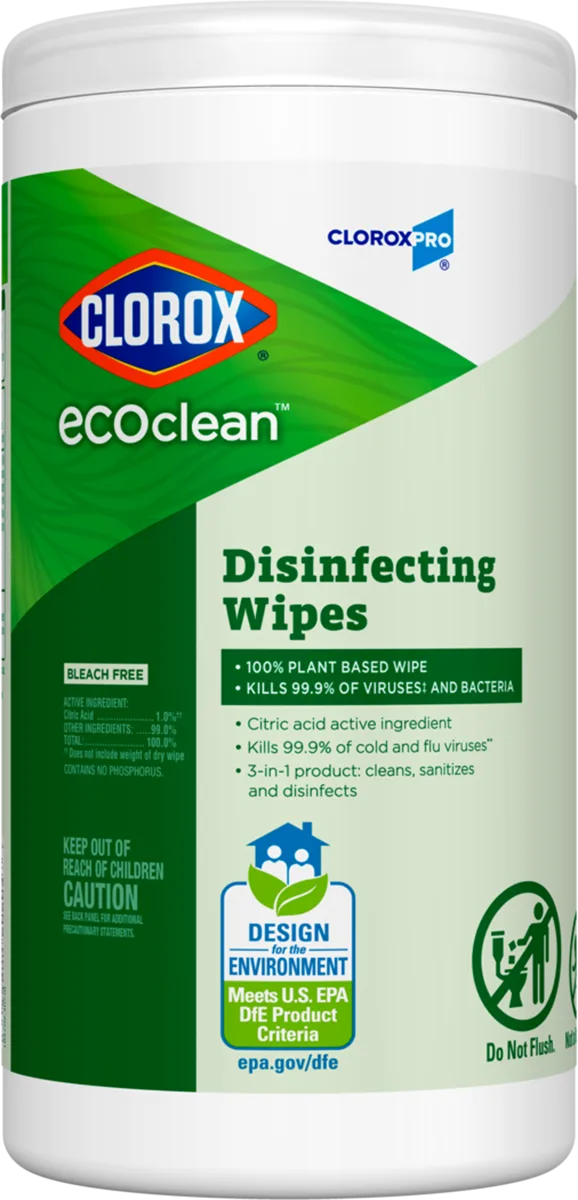 | 67619-48 | 5 min |
| Clorox EcoClean Disinfecting Cleaner and Refill Item No. 60213, 32 fl. oz. Spray, 9/case Item No. 60094, 128 fl. oz. refill, 4/case | 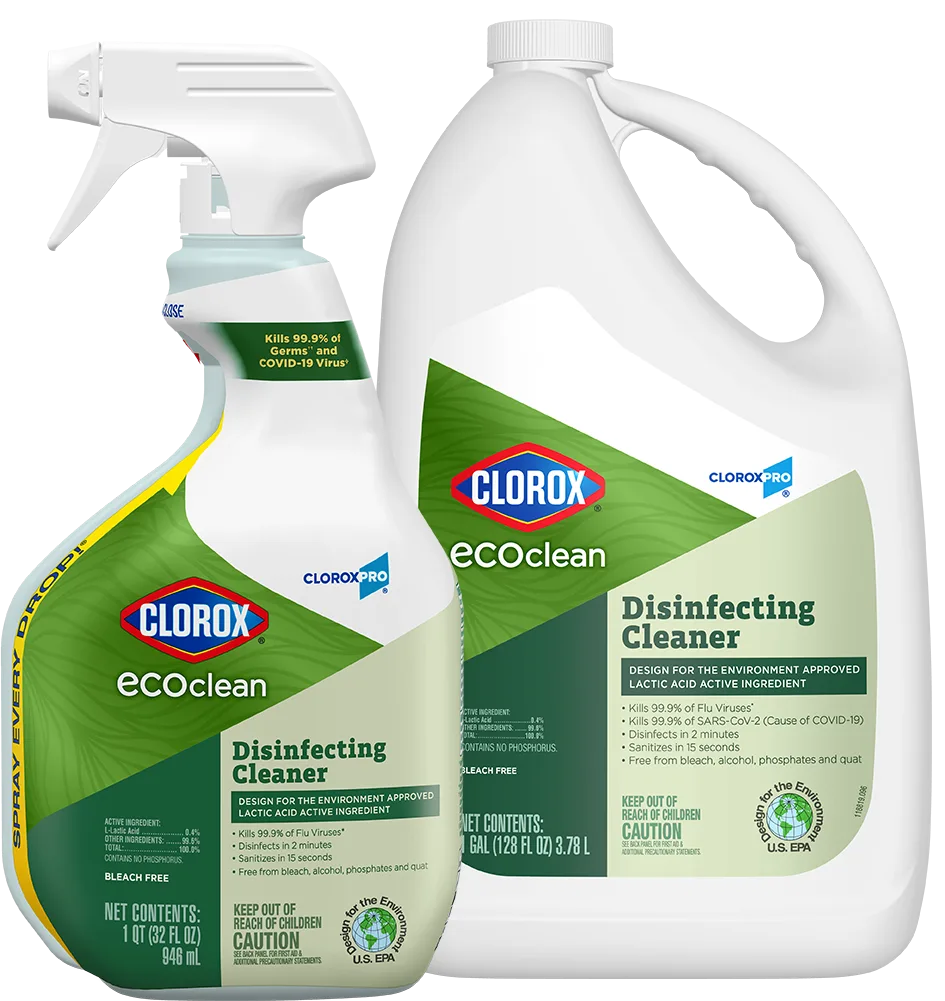 | 67619-45 | 30 sec |
| Clorox Healthcare Fuzion Cleaner Disinfectant Item No. 31478, 32 fl. oz. Spray, 9/case | 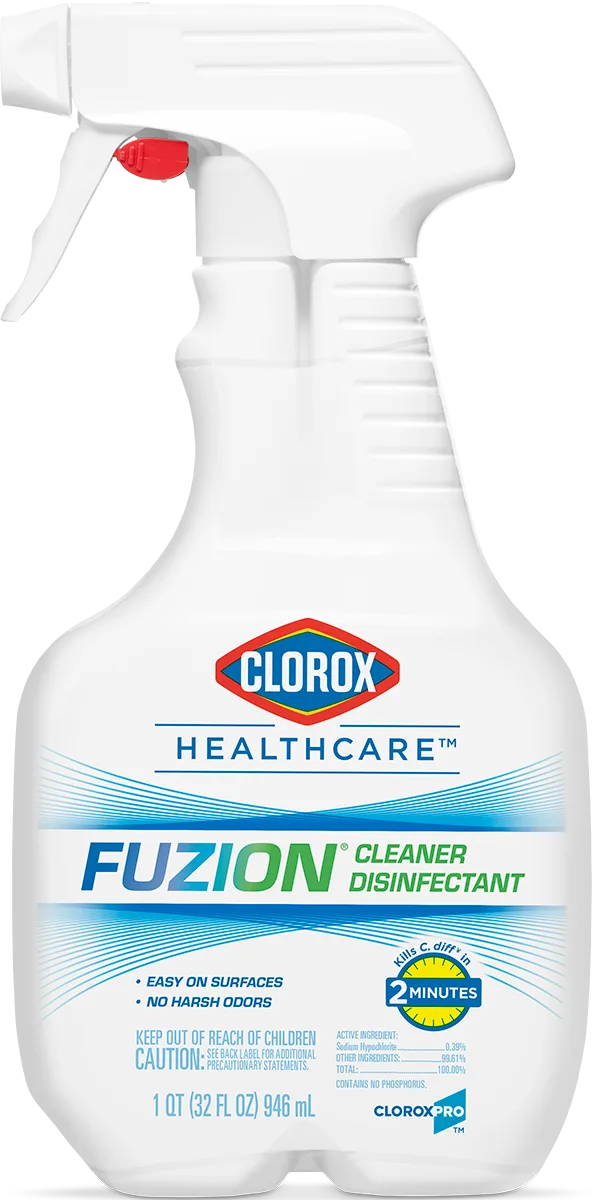 | 67619-30 | 1 min |
| Clorox Healthcare Bleach Germicidal Wipes Item No. 30577, 6" x 5" 150 ct. Canister, 6/case Item No. 35309, 6.75" x 9" 70 ct. Canister, 6/case Item No. 32621, 6.75" x 9" 100 ct. Softpack, 9/case Item No. 31424, 12" x 12" 50 ct. Carton, 6/case Item No. 30358, 12" x 12" 110 ct. Bucket, 2/case Item No. 30359, 12" x 12" 110 ct. Bucket Refill, 2/case | 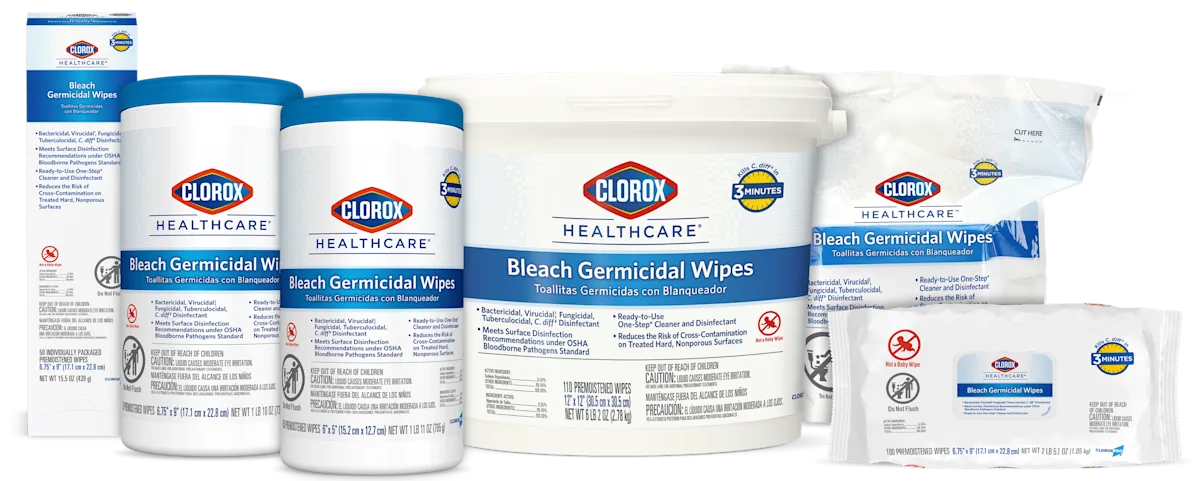 | 67619-12 | 1 min |
| Clorox Healthcare Bleach Germicidal Cleaner Item No. 68970, 32 oz. Spray, 6/case Item No. 68978, 128 fl. oz. Refill, 4/case | 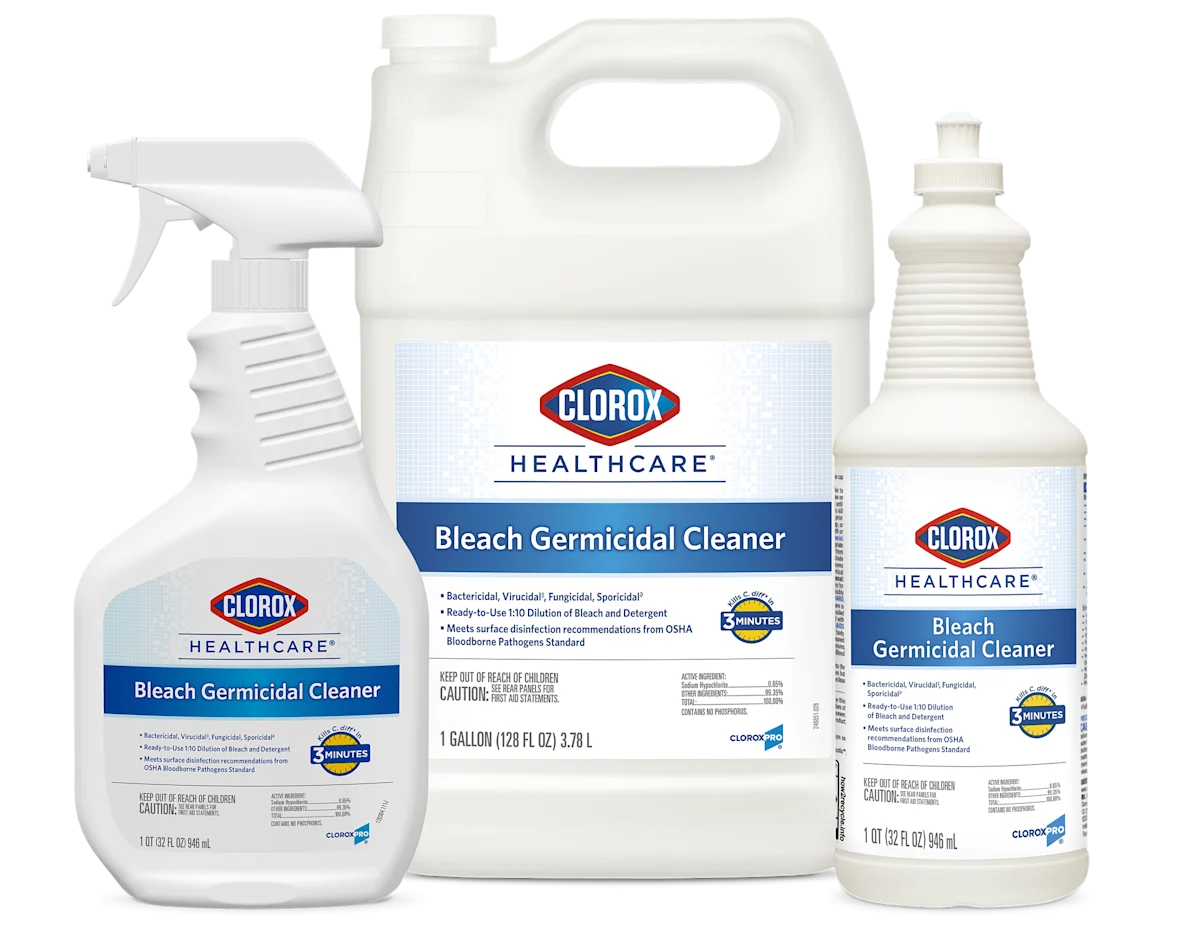 | 56392-7 | 1 min |
| Dispatch Wipes Item No. 69150, 6.75" x 8" 150 ct. Canister, 8/case | 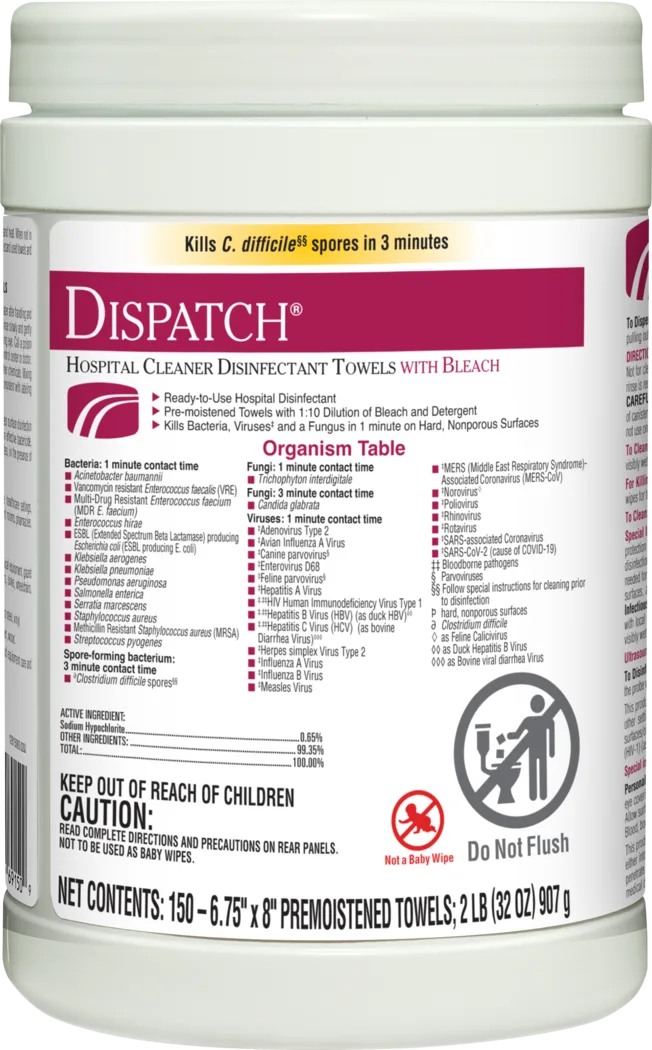 | 56392-8 | 1 min |
| Clorox Clean-Up Disinfectant Cleaner with Bleach Item No. 35417, 32 fl. oz. Spray, 9/case Item No. 35420, 128 fl. oz. Refill, 4/case | 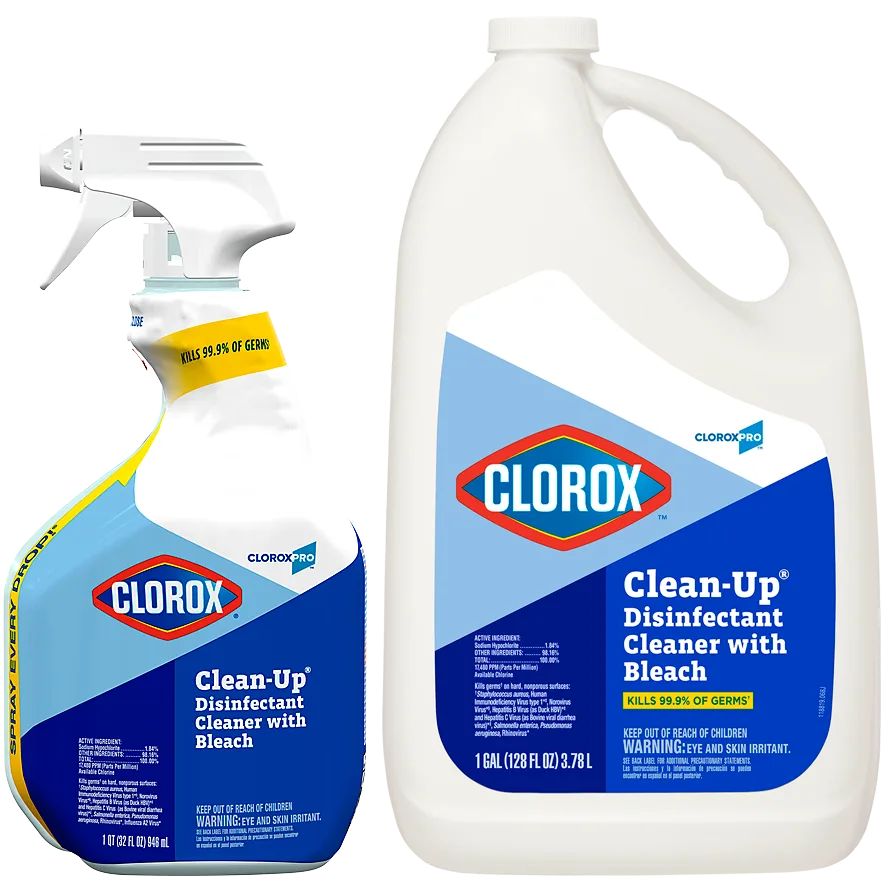 | 67619-17 | 1 min |
| Clorox Germicidal Bleach Item No. 30966, 121 fl. oz. Bottle, 3/case | 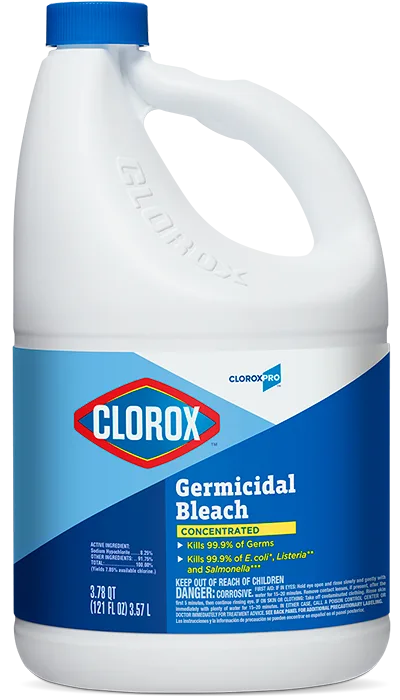 | 67619-32 | 5 min |
| Clorox Healthcare Hydrogen Peroxide Cleaner Disinfectant Wipes Item No. 30824, 6.75" x 9" 95 ct. Canister, 6/case Item No. 30825, 6.75" x 5.75" 155 ct. Canister, 6/case Item No. 30826, 12" x 11" 185 ct. Bucket, 2/case Item No. 30827, 12" x 11" 185 ct. Bucket Refill, 2/case | 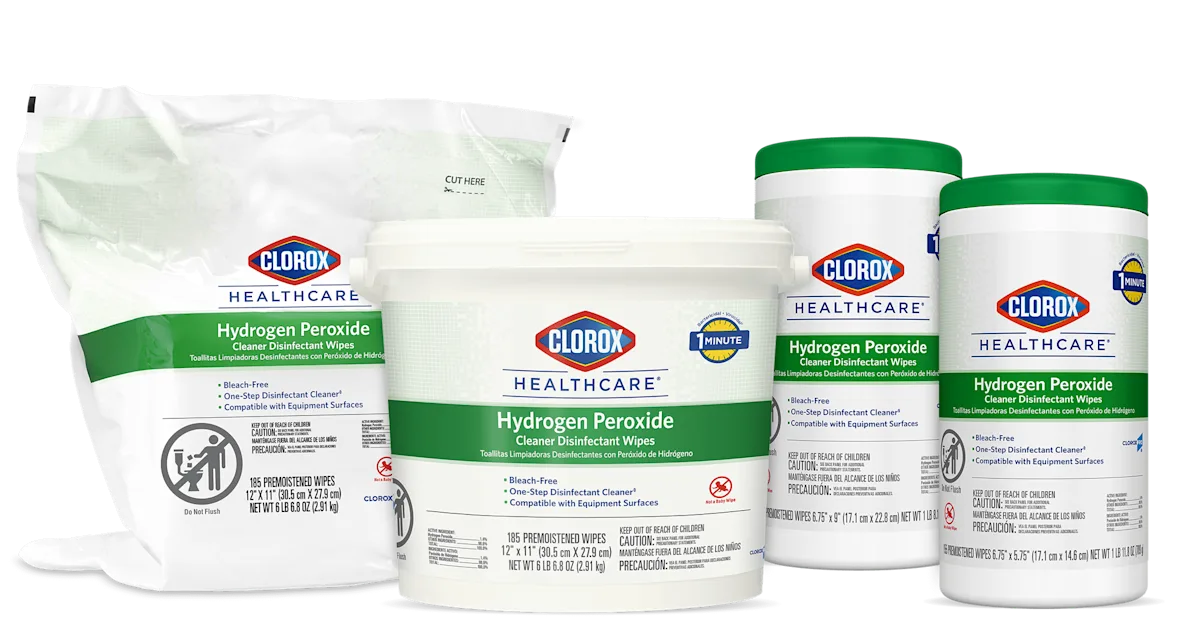 | 67619-25 | 2 min |
| Clorox Healthcare Hydrogen Peroxide Cleaner Disinfectant Cleaner Item No. 30828, 32 fl. oz. Spray, 9/case Item No. 30829, 128 fl. oz. Refill, 4/case | 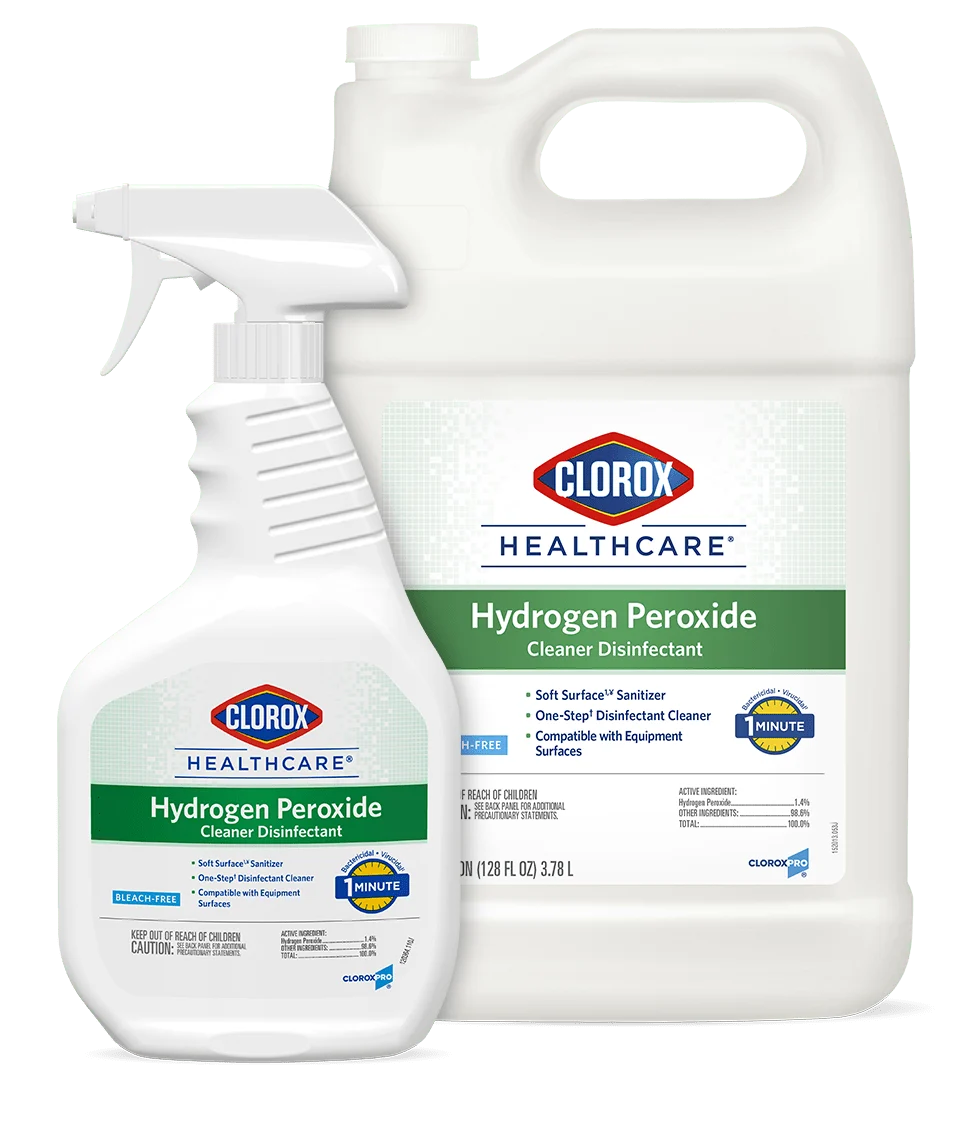 | 67619-24 | 1 min |
| Clorox Disinfecting Bio Stain & Odor Remover Item No. 31903 32 fl. oz. Spray, 9/case Item No. 31910, 128 fl. oz. Refill, 4/case | 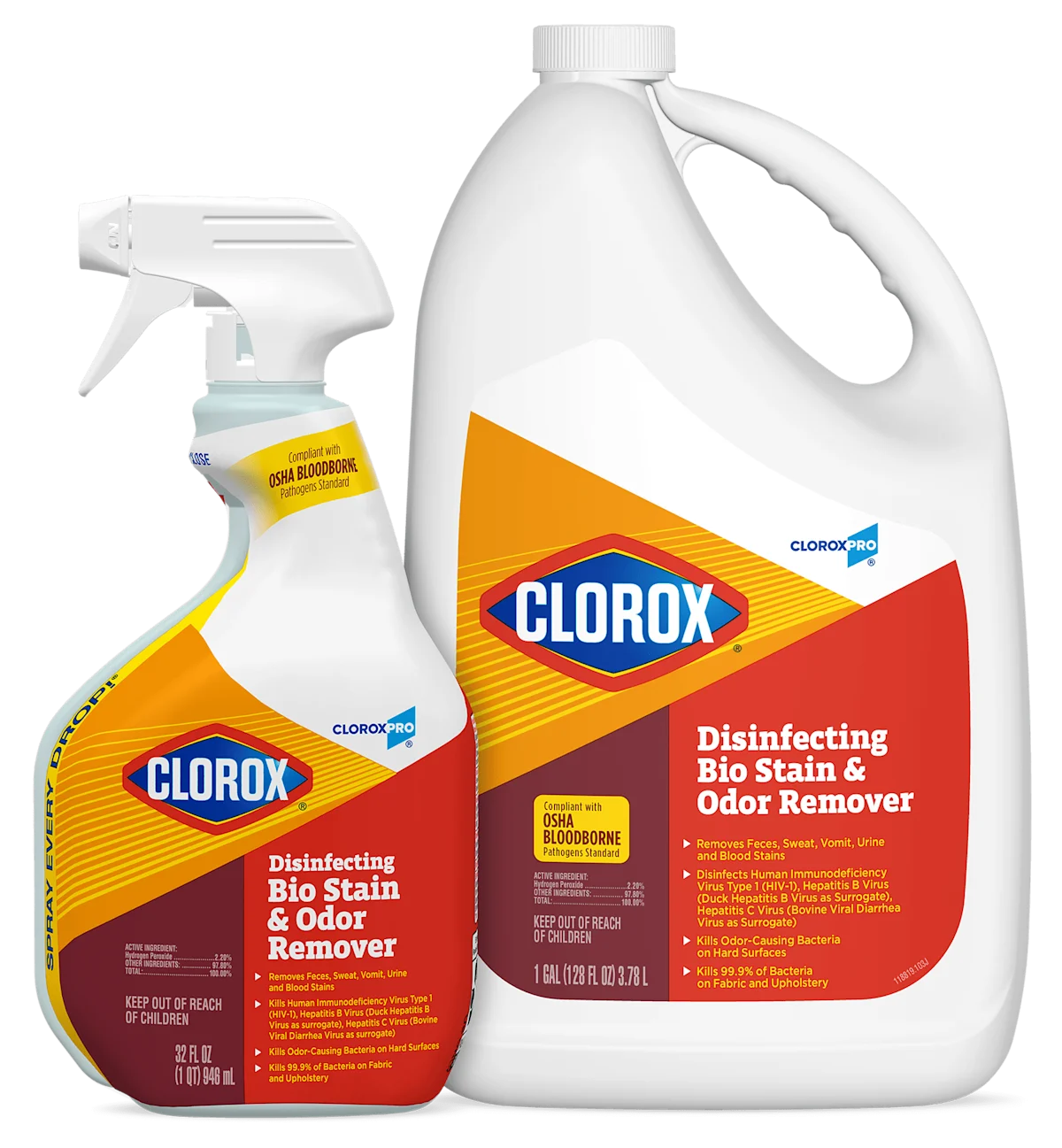 | 67619-33 | 5 min |
| Clorox Disinfecting Spray Item No. 38504, 19 fl. oz. Aerosol Spray, 12/case |  | 67619-21 | 10 min |
Other Resources
References
1. Mayo Clinic. Norovirus infection. www.mayoclinic.org/diseases-conditions/norovirus/symptoms-causes/syc-20355296. January 31, 2017. Accessed January 3, 2018.
2. Centers for Disease Control and Prevention. Norovirus in Healthcare Facilities Fact Sheet. https://www.cdc.gov/hai/pdfs/norovirus/229110-ANoroCaseFactSheet508.pdf. Last modified September 6, 2011. Accessed January 3, 2018.
3. Bok K, Green KY. Norovirus gastroenteritis in immunocompromised patients. N Engl J Med. 2012;367(22):2126-2132. doi: 10.1056/NEJMra1207742
4. Hall AJ, Lopman BA, Payne DC et al. Norovirus Disease in the United States. Emerg Infect Dis. 2013;19(8):1198-1205. wwwnc.cdc.gov/eid/article/19/8/13-0465_article.
5. Centers for Disease Control and Prevention. Norovirus US Trends and Outbreaks. https://www.cdc.gov/norovirus/trends-outbreaks.html. Accessed November 29, 2017.
6. Kim AN, Park SY, Bae SC, Oh MH, Ha SD. Survival of norovirus surrogate on various food-contact surfaces. Food Environ Virol. 2014;6(3):182-188.
7. Barker, J, Vipond IB, Bloomfield SF. Effects of cleaning and disinfection in reducing the spread of Norovirus contamination via environmental surfaces. J Hosp Infect. 2004;58(1):42-49.
8. Gerba CA. How quickly viruses can contaminate buildings — from just a single doorknob. American Society for Microbiology’s 54th Interscience Conference on Antimicrobial Agents and Chemotherapy (ICAAC), 2014.
9. Johnston CP, Qiu H, Ticehurst JR, et al. Outbreak management and implications of a nosocomial norovirus outbreak. Clin Infect Dis. 2007;45(5):534-540.
10. Melinda Wenner Moyer. “How to Prevent Nasty Stomach Bugs This Winter? More Bleach.” New York Times 29 Nov 2018. https://www.nytimes.com/2018/11/29/smarter-living/norovirus-prevention-stomach-flu-winter.html













